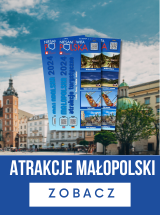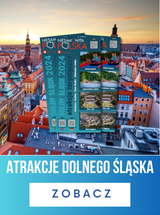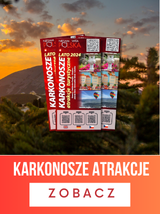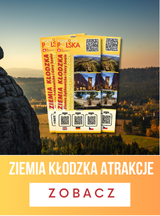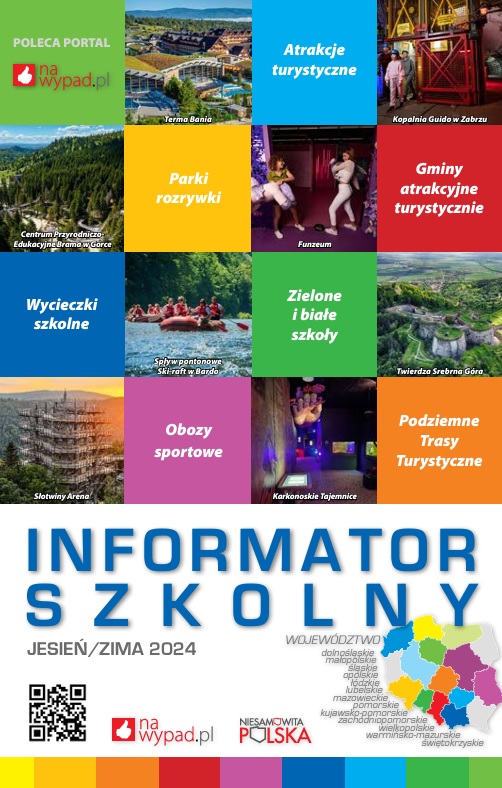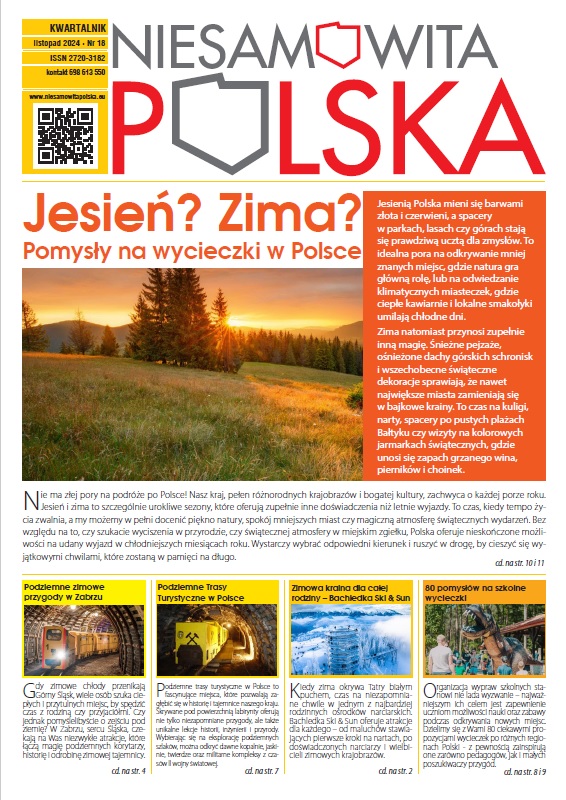The Pomeranian Voivodeship is the northernmost voivodship in Poland. 316 km of coastline on the Baltic Sea is the main factor that makes Pomorskie one of Poland's most attractive and dynamically developing regions.
Pomeranian tourist attractions
The border with Russia runs through the Vistula Spit, and the capital of the Pomeranian Voivodeship is Gdańsk, which, together with Sopot and Gdynia, forms the Tri-City. However, the indigenous inhabitants of the region are Kashubians, but Pomeranian also includes the Słupsk Land, Żuławy, Powiśle, Bory Tucholskie and Kociewie. Pomorskie is a region with a turbulent history, and the events that took place here years ago are recalled by monuments such as the Gdańsk Shipyard, Westerplatte or numerous castles built by the Teutonic Knights, of which the Teutonic Castle in Malbork is today the largest and most famous. There are two national parks in the province: Słowiński National Park and Bory Tucholskie National Park, which attract tourists not only from Poland but also from abroad. What else do you have to see when visiting the Pomeranian Voivodeship? We answer!
What is worth seeing in Pomorskie? Attractions for children and seniors

In the area of the voivodeship, we will find a lot of various attractions that will delight everyone: from toddlers to seniors. There is no denying that the natural values are one of the main reasons why crowds of tourists come here. The Słowiński National Park is located here, associated primarily with the moving dunes on the Łebska Spit and with the Czołpińska Dune, creating a desert landscape, but also with numerous swamps, peat bogs, coastal forests and forests, as well as lakes such as Łebsko, Gardno and Dołgie Wielkie, which occupy more than half of the park area.
There are many hiking and cycling trails of varied nature and difficulty levels. On the other hand, the Bory Tucholskie National Park attracts visitors because of its pristine nature. There are as many as 127 nature reserves and 9 landscape parks in the voivodeship, which, apart from long walks surrounded by greenery and clean air, are perfect for birdwatching, cycling, fishing, horseback riding or canoeing.
Tri-City: Gdańsk, Gdynia, Sopot - you must visit

The Tri-City created by Gdańsk, Gdynia and Sopot is a metropolis where modernity intertwines with history. Gdańsk is strongly associated with the history, Gdynia is a modern city, and Sopot attracts mainly patients. Kilometres of wide, sandy beaches are primarily a refuge for arriving vacationers, but the Tri-City also attracts because of numerous attractions for children, such as the Zoological Garden, Hewelianum, Miniatura Theatre, Maritime Culture Center in Gdańsk, EXPERYMENT Science Center or Aquarium in Gdynia and Aquapark in Sopot. Worthy of attention is the Gdańsk Carousel, from which you can admire the area's panorama and the largest playroom in the Tri-City - Loopy's World. In addition, there are plenty of smaller playgrounds, including outdoor ones, as well as rope parks, trampoline parks and water attractions that will bring a lot of joy not only to kids.
While in Gdańsk, you cannot miss historical gems such as the famous Neptune Fountain, the Royal Route, covering Długa Street and Długi Targ, Artus Court, Crane Gate, which is the oldest and largest port crane in medieval Europe, or the beautiful Oliwa Park with lots of well-maintained alleys and ponds. Gdańsk, one of the oldest Polish cities, is considered to be where World War II broke out and Solidarity was founded. It is not surprising, then, that in such facilities as the Museum of the Second World War and Westerplatte or the European Solidarity Center, small journeys in time await us.
Gdańsk is also a city of amber, so the Amber Museum must be a must during your trip. Also noteworthy is the very centre of the city, with the Town Hall in the main role, as well as Mariacka Street, known throughout Poland, which is the most atmospheric corner of this city, and St. Mary's Basilica, which is the largest Gothic temple in Europe made of bricks.
Gdynia, in turn, which is called the city of festivals, is a very dynamically developing city. It will charm us with the historic pier and the beach in Orłowo along with the Orłowo cliff, and the cable car ride to Kamienna Góra will leave an unforgettable seascape in our memory! One of the most famous places in Gdynia is Kosciuszko Square, which is the mainstay of social life and the museum ship "Dar Pomorza", which only inside causes real admiration, as does the museum ship "Blyskawica". Every military lover should visit the Naval Museum, which is rich in collections from the Second World War. The name of one of the most interesting Polish museums was given to the Emigration Museum, where a visit is associated with a lot of emotions.
Sopot is also a vibrant city, where a walk along the longest wooden pier on the Baltic Sea or around the villa district of Sopot will allow you to relax to the rhythm of the sound of the sea. Speaking of Sopot, it is impossible not to mention the famous promenade called Monciak (from the name of Bohaterów Monte Cassino Street), which is the heart of the city's social life. On a rainy day, it is worth replacing sunbathing with a visit to the State Art Gallery or a session at the Brine Water Pump Room. One of the newest attractions of Sopot is the Sopockie Grodzisko, which was created in the place where the remains of a real Slavic settlement from over a thousand years ago were discovered.
Being on the subject of the Tri-City, it is impossible to omit the seaports in Gdańsk and Gdynia, which are the largest ports on the Baltic Sea. The famous Forest Opera hosts numerous cabaret festivals, concerts and shows every year.
Kashubia - the green heart of Poland

A visit to Kashubia - one of the most culturally rich regions of Poland, will allow you to break away from the city hustle and bustle effectively. Traditions reign here, which can be seen, or rather heard, by the locals who speak their own language. Characteristics of the culture of the inhabitants of Kashubia are also folk costumes, Kashubian music and cuisine, and handicrafts with Kashubian embroidery that deserve special attention.
Kashubia is primarily the most recognizable Hel Peninsula, Puck with the Bay of Puck, Władysławowo or Łebno and neighbouring towns where, apart from clean beaches, there are many lighthouses, manor houses and fishing huts. Below the shoreline, we will enjoy the views of dense forests, many high-class lakes and hills, of which Wieżyca deserves special attention - the highest peak by the sea (329 m above sea level), which is also a popular vantage point thanks to the tower built there. An excellent place for an active rest is Kartuzy, where numerous hiking and cycling trails are waiting for us, running through the Mirachowskie Forests and nature reserves there.
Those interested in knowing about the Kashubian culture are sent to the Kashubian Museum in Kartuzy, where we will not only learn more about the Kashubian language but also learn about the history of Kashubian instruments such as the devil's violin or burczybas. Another Kashubian city - Kościerzyna, called the heart of Kashubia, in addition to beautiful landscapes filled with lakes, rivers and hills, which are an ideal place for sports enthusiasts, will also host railway fans and fans of the golden drink. The country's richest Railway Museum is located here. In Stary Browar, situated in the city centre, you can watch the process of beer production and enjoy the taste of drinks, especially on a hot day.
Slowinski National Park
In the vicinity of the Słowiński National Park, you will find cities such as Ustka, Łeba and Słupsk. The Słupsk Land is worthy of attention due to its picturesque landscapes, not only by the seaside but also by rivers, because the Słupia River flowing here is an ideal place for active canoeing. An interesting fact that not everyone knows is the fact that it is in Słupsk that the oldest lift in Europe is located. Apart from being one of the most famous Polish seaside resorts, Ustka is also a health resort whose main assets are graduation towers and peat, which have a pro-health effect on many diseases.
Being in Ustka, it is worth going for an evening walk along the seashore - you can admire the over the 100-year-old lighthouse, which still shows the way for sailors. Other noteworthy lighthouses are the Stilo Lighthouse and the lighthouse in nearby Czołpino, which are as charming as the lighthouse in Ustka. When visiting the Słupsk Land, it is impossible not to stop looking at the traditional black and white buildings, which have been appreciated, among others, for the in Swołowo. Because of them, the town was called the European Village of Cultural Heritage, and the Museum of Folk Culture of Pomerania was established there. Another open-air museum has been created in the area - the Museum of the Słowińska Village, where we will not only learn the history of Słowińce - indigenous inhabitants of these lands but also taste traditional wafers baked for over 200 years according to the same recipe.
For history lovers, the Ustka Fortress awaits, where you can take a journey into the past.
Żuławy - ideal for cyclists and canoeists

When talking about the attractions of the Pomeranian Voivodeship, it is impossible to omit Żuławy, an ideal place for cyclists and canoeists -all thanks to the Żuławy Loop, which is an over 300-kilometre waterway connecting the Vistula and several other, smaller rivers. The exceptionally flat lay of the land was an excuse to create bicycle routes such as the Mennonite Trail or the Motława Trail, which, in addition to the fun of the ride itself, also give you the joy of learning about the historic architecture of the region: Gothic churches, arcaded houses or the so-called Dutch homesteads.
Powiśle - forests, lakes and rivers
Powiśle, another region of the Pomeranian Voivodeship, in addition to its natural values, consisting mainly of dense forests, lakes and rivers, creating picturesque landscapes, attracts tourists with numerous monuments, often related to the history of the Teutonic Knights on Polish lands. The first important destination is the 13th-century castle in Kwidzyn, which used to be the region's religious and political capital, mainly known by tourists for its magnificent arcaded porch leading to the interior. The second significant monument is the defensive stronghold in Sztum, which today is the seat of a branch of the Castle Museum in Malbork.
Teutonic Castle in Malbork
However, the most famous building in the region is of course, the Teutonic Castle in Malbork, which is the largest castle in Poland, entered on the UNESCO World Heritage List. In Prabuty, it is worth seeing the underground waterworks route - a route of corridors hidden in the undergrounds of the Old Town. Speaking of Powiśle, it is worth noting that this region is famous for plum jam and plum liqueurs produced here, grown here on a larger scale.
Pomeranian attractions - Kociewie
A journey through Pomerania must attend Kociewie - a land that, similarly to Kashubia, boasts a deeply rooted culture and its own folk, language and culinary tradition. Kociewie is mainly such cities as Tczew and Pelpin. The former is associated with the famous 19th-century road bridge. For museum lovers, we have the Vistula Museum.
Art lovers will satisfy their hunger in the Art Factory, where you can admire art exhibitions from various fields. In turn, in the Shipwreck Conservation Center, you can admire a collection of boats from around the world. Pelpin, in turn, is called the spiritual capital of the region due to the presence of a magnificent post-Cistercian basilica and church, as well as a hill located not far from the city, on which Pope John Paul II prayed years ago, and which a today is a place of pilgrimage for many inhabitants of Pomerania.
Kociewie is also a stronghold in Gniew, also built by the Teutonic Knights at the turn of the 13th and 14th centuries, like other Pomeranian castles. Kociewie is also worth adding to the tourist list due to the presence of Grodzisk Owidz, historically a stronghold, and today functions as the Museum of Slavic Mythology. However, Starogard Gdański is considered to be the real capital of the region, and the historical events related to this place can be recalled during a walk around the city, watching the market square and towers, as well as visiting the Museum of the Kociewie Land and the Museum of 2. Pułku Szwoleżerów Rokitniańskich.
Bory Tucholskie - peace, quiet and greenery
The last point of the trip around Pomerania is Bory Tucholskie, where fresh air, silence, peace and greenery have become a refuge for those tired of the city hustle and bustle. There are as many as 25 reserves in Bory Tucholskie, through which the Brda and Wda rivers flow. In addition to cycling routes, water tourism is also developing here, related to canoeing, rafting, and even rafting, which gives the more fun the more winding the river is.
In addition to rivers, many lakes here attract fishing fans or just people who want to rest surrounded by beautiful views, peace and the sound of the wind. And although Bory Tucholskie attracts mainly due to its unblemished nature, there are also architectural monuments such as the Człuchowska Gate in Chojnice or the castle in Człuchów.
Why is it worth visiting Pomorskie?

Pomorskie is a land of many possibilities - although associated primarily with the Baltic Sea, it offers much more than we can expect! Numerous tourist attractions in full of life Tri-City, hundreds of kilometres of bicycle and walking routes, beautiful views, fresh air, dense forests, clean lakes, winding rivers, well-preserved monuments, open-air museums, and museums strongly associated with local culture are just a few of the arguments that convince until arrival in the Pomeranian Voivodeship.
There are no divisions in Pomorskie - everyone feels good here. Seniors, children and their parents, active and those who like sweet laziness - everyone will find a lot of attractions here, which can often be visited throughout the year, not only during the holiday season. The presence of the sea, which in itself is a great magnet for tourists, has forced the development of a powerful catering and accommodation base. And it's no wonder that today Pomerania is one of the most popular holiday destinations. It should be noted, however, that Pomorskie is not only the Baltic Sea, beaches and the Tri-City, but a number of other, smaller towns and villages, where each has something to offer. And we sincerely encourage you to use these attractions!



